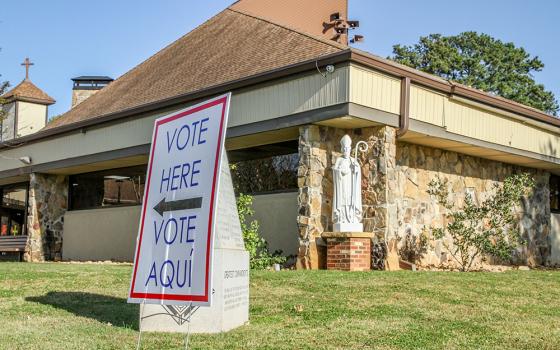The number of sisters in the majority of religious communities of women in the United States has been in fairly rapid decline over the past five years, dropping from 60,642 in 2007 to 46,451 today.
That loss of 14,191 sisters was reported by the Leadership Conference of Women Religious during its annual assembly in Garden Grove, Calif., last month. The conference, whose members lead 95 percent of the sisters in communities in the U.S., projects the loss of another 2,787 sisters in 2012.
This dramatic diminishment is the result of the death of women who joined the communities during the heyday of vocations in the 1940s, ’50s and ’60s, as well as fewer new members over the past 30 years.
The Center for Applied Research in the Apostolate reported in 2009 that 91 percent of women religious with final vows were at least 60 years old and that a majority of those under the age of 60 were in their 50s. Additionally, CARA reported that more than half of the women in initial formation in LCWR institutes are 40 or older.
These demographics pose a specific challenge to the recruitment and retention of new members to those communities. According to CARA’s 2009 report “Recent Vocations to Religious Life,” age and experience differences between new and older members as well as the lack of peers in religious life were identified as areas of concern for women considering a religious vocation.
CARA also reported that the approximately 100 institutes represented by the Council of Major Superiors of Women Religious, whose members are considered more traditional, are attracting new members who are generally at least 10 years younger than those joining LCWR congregations.
The women seeking admission to CMSWR institutes, reported CARA, want to wear a religious habit and to live in large or medium-size communities with others solely of their religious institute.
Mary Gautier, senior research associate at CARA who oversaw the religious life study, said in a recent interview with NCR’s Tom Roberts that the highest number of final professions in any order of women religious last year was nine. The next largest number was four. And, Gautier said, neither group of orders -- LCWR or CMSWR -- has a retention rate of more than 50 percent prior to profession of perpetual vows.
Another study, this one conducted by Mercer Human Resource Consulting for the National Religious Retirement Office, projected that by 2019 the number of religious over the age of 70 will outnumber those under 70 by four to one.
For all the communities with declining membership, questions about the future loom large. Some have already merged and others are considering that option. Some are networking with congregations that share the same founder or charism, but without formal reconfiguration. Still others have reduced the number of provinces or districts within their order. Many are extending their associate programs to incorporate more lay women and men. A few have decided that “the last person left turns out the lights.”
During a three-day process of contemplation at the Leadership Conference of Women Religious assembly, participants articulated a conviction that they are partners with the Spirit in the emergence of new forms of religious life.
“We’re willing to put everything on the table for the sake of realignment in service to God’s mission in the world,” Providence Sr. Marie McCarthy, one of the facilitators of the contemplative process, said in her report at the assembly’s conclusion. “The work is God’s and we are available for it.”
Stories in this series
|



